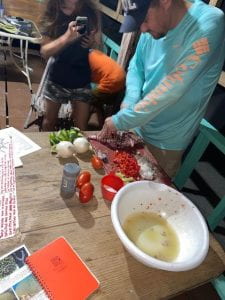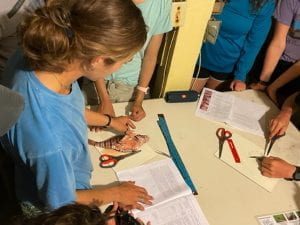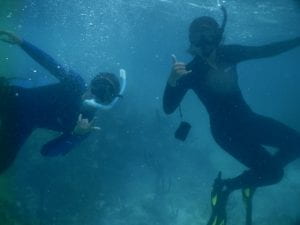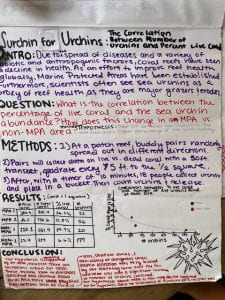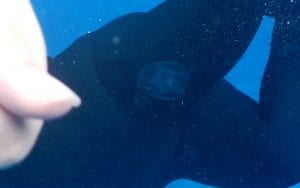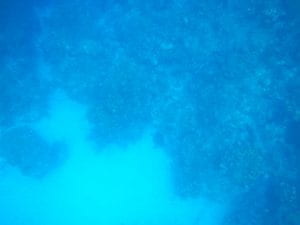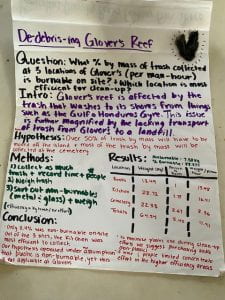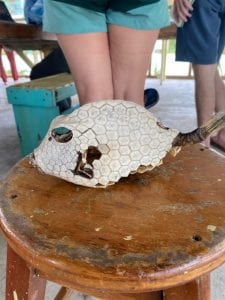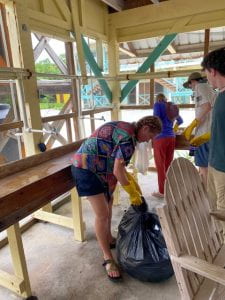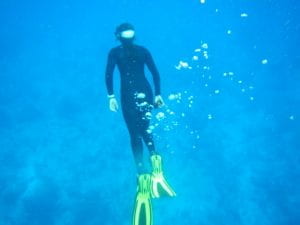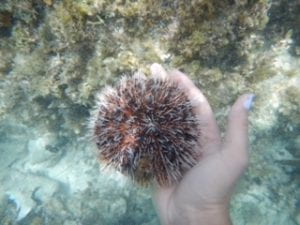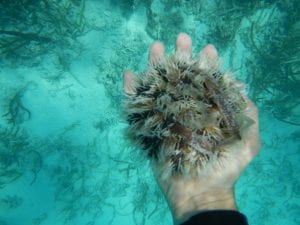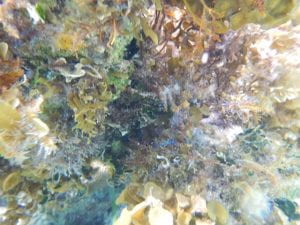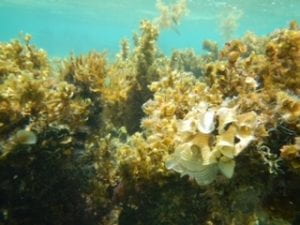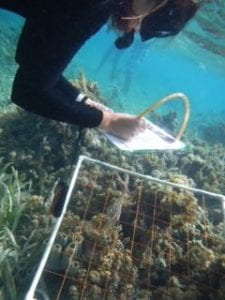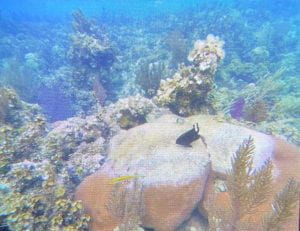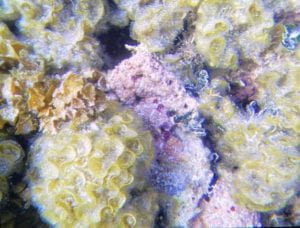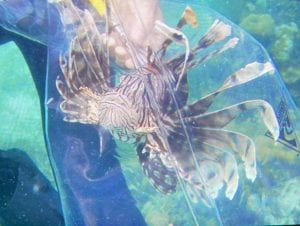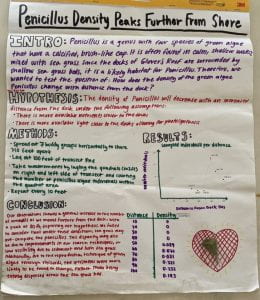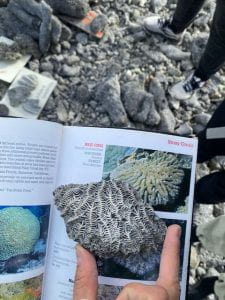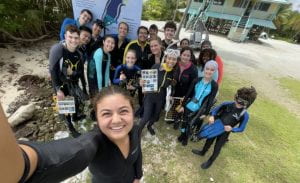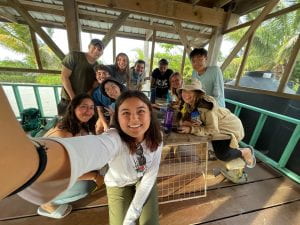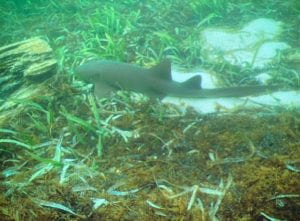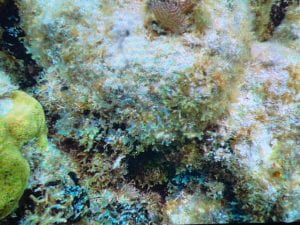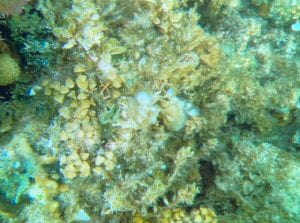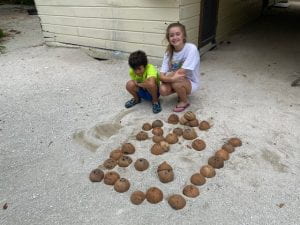There was a lot to do today, since it was our last day!
We started out by going to a non-MPA to collect our last data set for our research question from three days ago. We used the transects and quadrats for the last time, which was very bitter sweet. The reef was very sparse, with very few live corals. There was a decent amount of brown algae, mainly the saucer leaf algae, covering the rubble. We saw some Caribbean reef squid though! There were six or seven of them, and they were all in a row in the seagrass bed that surrounded the reef. Doing what, I don’t know.
Afterwards, we went to a reef in the MPA, which they call “The Aquarium.” There were tons of fish, including parrot fish, angel fish, damsel fish, and others that I couldn’t identify. There was also a lot of brown algae! Yay! It was mainly saucer leaf algae and funnelweed, intermixed with some white scroll algae and y-branching algae. I saw a really cool blue variety of the y-branching algae, which I believe to have been dictyota menstrualis. It was right in the middle of a patch of saucer leaf algae.
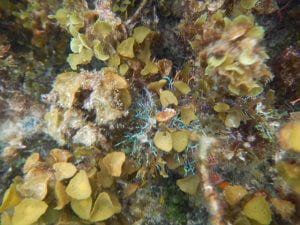

After lunch, we compiled and analyzed our data, and presented it to the professors. You can read about it below! The poster doesn’t include in the discussion that there may have also been a difference in the non-MPA sited due to environmental factors that we couldn’t take into account, such as differences in the amount of fishing in each area.
We enjoyed some presentations from our fellow classmates, and then had a lovely dinner, which included friend conch! It was actually quite tasty. But it wasn’t until after dinner that the real fun began! We performed dissections on the three lionfish that were caught by Prof Solomon this week, and added our data to the list of lionfish data from the previous years of the BIOS 319 trip. Once we were done, Prof Solomon filleted the lionfish, and put them into a mixture of lime juice, tomato, and onions to create a ceviche. It turned out quite delicious! I would definitely recommend eating lionfish! Although I think I still smell like fish.
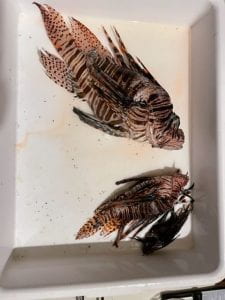
Anyways, today was the last day on the reef! It’s amazing that the time passed so quickly! Tomorrow we will be taking a boat back to the mainland, and starting the land portion of the class. See you all then!
-Elena
